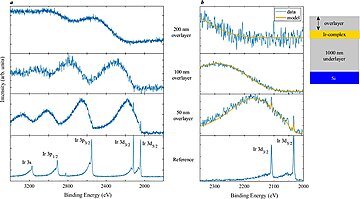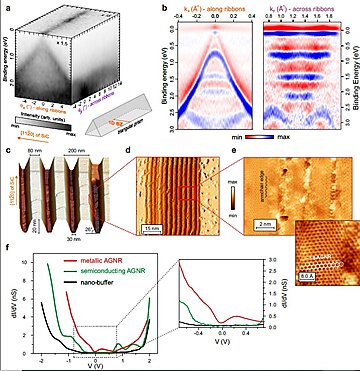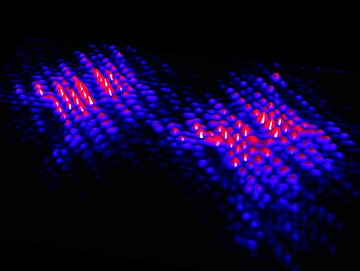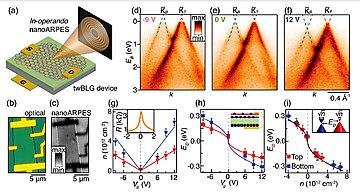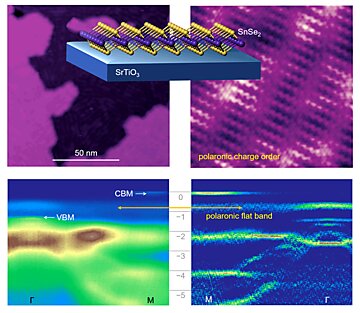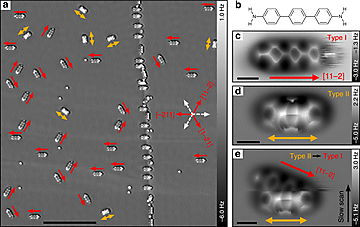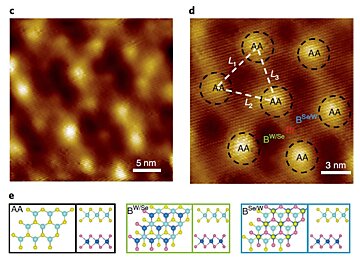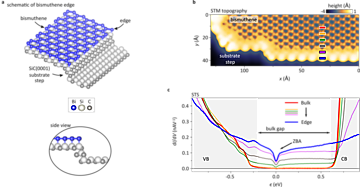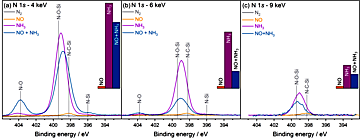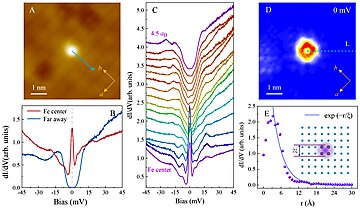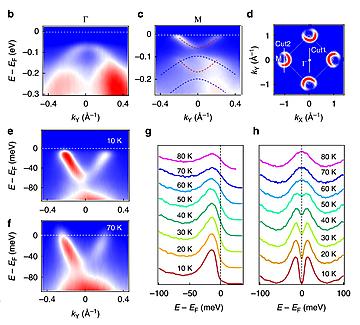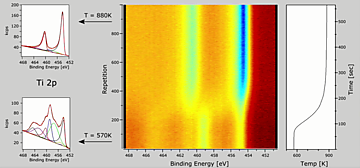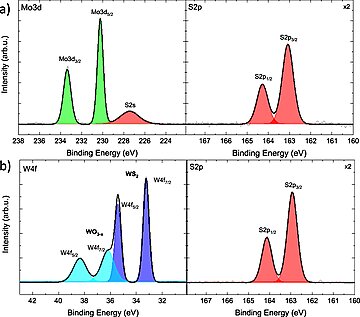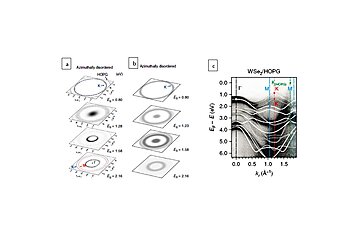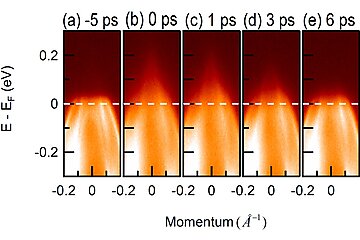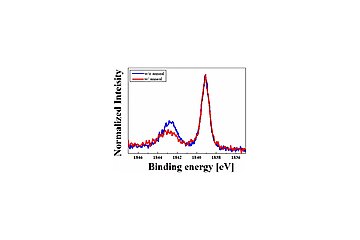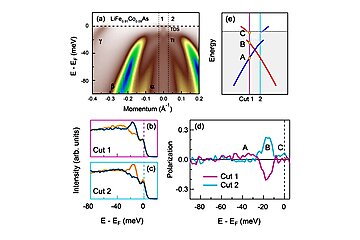Result of the Month(ROM)
Spectroscopic evidence of intra-unit-cell charge redistribution in a charge-neutral magnetic topological insulator
Result of the Month December 2025
The magnetic topological insulator MnBi6Te10 has emerged as a promising candidate for realizing the quantum anomalous Hall effect (QAHE), owing to its ability to retain ferromagnetism through precise control of anti-site defects. The next important task for realizing the QAHE is to tune the chemical potential into the energy gap formed by the broken time-reversal symmetry. Here we reveal an intra-unit-cell charge redistribution even when the overall doping suggests a near-charge-neutral condition. By performing time- and angle-resolved photoemission spectroscopy (trARPES) on the optimally 18% Sb-doped MnBi6Te10, we observe transient surface photovoltage (SPV) effects on both the MnBi2Te4 and single-Bi2Te3 terminations. Furthermore, we observe a time-dependent splitting of the band structure indicating multiple SPV shifts with different magnitudes. This observation suggests that adjacent plateaus with nominally the same terminating layer exhibit a strong intra-unit-cell charge redistribution, resulting in spontaneous electrical polarization. This is consistent with static micro-ARPES measurements revealing significant doping deviations from the charge-neutral configuration. Our findings underscore the challenges of engineering the family of Mn–Bi–Te materials to realize QAHE purely through chemical doping. Achieving the desired topological quantum phase requires both a uniform carrier doping and a ferromagnetic ground state. Furthermore, the light-induced polarization within each unit cell of ferromagnetic Mn(Bi0.82Sb0.18)6Te10 may open new possibilities for optoelectronic and spintronics.
In-situ probing of the Fischer-Tropsch reaction on Co single crystal surfaces up to 1 bar
Result of the Month November 2025
The surface chemistry of the Fischer-Tropsch catalytic reaction over Co has still several unknows. Here, we report an in-situ X-ray photoelectron spectroscopy study of Co(0001) and Co(10-14), and in-situ high energy surface X-ray diffraction of Co during the Fischer-Tropsch reaction at 0.15 bar - 1 bar and 406 K - 548 K in a H2/CO gas mixture. We find that these Co surfaces remain metallic under all conditions and that the coverage of chemisorbed species ranges from 0.4–1.7 monolayers depending on pressure and temperature. The adsorbates include CO on-top, C/-CxHy and various longer hydrocarbon molecules, indicating a rate-limiting direct CO dissociation pathway and that only hydrocarbon species participate in the chain growth. The accumulation of hydrocarbon species points to the termination step being rate-limiting also. Furthermore, we demonstrate that the intermediate surface species are highly dynamic, appearing and disappearing with time delays after rapid changes in the reactants’ composition.
Deep-ultraviolet transparent conducting SrSnO3 via heterostructure design
Result of the Month October 2025
Exploration and advancements in ultrawide bandgap (UWBG) semiconductors are pivotal for next-generation high-power electronics and deep-ultraviolet (DUV) optoelectronics. Here, we used a thin heterostructure design to facilitate high conductivity due to the low electron mass and relatively weak electron-phonon coupling, while the atomically thin films ensured high transparency. We used a heterostructure comprising SrSnO3/La: SrSnO3/GdScO3 (110), and applied electrostatic gating, which allow us to effectively separate charge carriers in SrSnO3 from dopants and achieve phonon-limited transport behavior in strain-stabilized tetragonal SrSnO3. This led to a modulation of carrier density from 1018 to 1020 cm-3, with room temperature mobilities ranging from 40 to 140 cm2 V-1 s-1. The phonon-limited mobility, calculated from first principles, closely matched experimental results, suggesting that room temperature mobility could be further increased with higher electron density. In addition, the sample exhibited 85% optical transparency at a 300-nm wavelength. These findings highlight the potential of heterostructure design for transparent UWBG semiconductor applications, especially in DUV regime.
Visualizing stepwise evolution of carbon hybridization from sp3 to sp2 and to sp
Result of the Month September 2025
Regulating carbon hybridization states lies at the heart of engineering carbon materials with tailored properties but orchestrating the sequential transition across three states has remained elusive. Here, we visiualize stepwise evolution in carbon hybridizations from sp³ to sp² and to sp states via dehydrogenation and elimination reactions of methylcyano-functionalized molecules on surfaces. Utilizing scanning probing microscopy, we distinguish three distinct carbon-carbon bond types within polymers induced by annealing at elevated temperatures. Density-functional-theory calculations unveil the pivotal role of the electron-withdrawing cyano group in activating neighboring methylene to form C(sp3 )–C(sp3 ) bonds, and in facilitating subsequent stepwise HCN eliminations to realize the transformation across three carbon-carbon bond types. We also demonstrate the applicability of this strategy on one-dimensional molecular wires and two-dimensional covalent organic framework on different substrates. Our work expands the scope of carbon hybridization evolution and serves as an advance in flexibly engineering carbon-material by employing cyanomethyl-substituted molecules.
Tunable topological phases in nanographene-based spin-1/2 alternating-exchange Heisenberg chains
Result of the Month August 2025
Unlocking the potential of topological order in many-body spin systems has been a key goal in quantum materials research. Despite extensive efforts, the quest for a versatile platform enabling site-selective spin manipulation, essential for tuning and probing diverse topological phases, has persisted. Here we utilize on-surface synthesis to construct spin-1/2 alternating-exchange Heisenberg chains by covalently linking Clar’s goblets—nanographenes each hosting two antiferromagnetically coupled spins. Using scanning tunnelling microscopy, we exert atomic-scale control over chain lengths, parities and exchange-coupling terminations, and probe their magnetic response via inelastic tunnelling spectroscopy. Our investigation confirms the gapped nature of bulk excitations in the chains, known as triplons. Their dispersion relation is extracted from the spatial variation of tunnelling spectral amplitudes. Depending on the parity and termination of chains, we observe varying numbers of in-gap spin-1/2 edge excitations, reflecting the degeneracy of distinct topological ground states in the thermodynamic limit. By monitoring interactions between these edge spins, we identify the exponential decay of spin correlations. Our findings present a phase-controlled many-body platform, opening avenues toward spin-based quantum devices.
Directional picoantenna behavior of tunnel junctions formed by an atomic-scale surface defect
Result of the Month July 2025
Plasmonic nanoantennas have attracted much attention lately, among other reasons because of the directionality of light emitted by fluorophores coupled to their localized surface plasmon resonances. Plasmonic picocavities, i.e., cavities with mode volumes below 1 nm3, could act as enhanced antennas due to their extreme field confinement, but the directionality on their emission is difficult to control. In this work, we show that the plasmonic picocavity formed between the tip of a scanning tunneling microscope and a metal surface with a monoatomic step shows directional emission profiles and, thus, can be considered as a realization of a picoantenna. Electromagnetic calculations demonstrate that the observed directionality arises from the reshaping and tilting of the surface charges induced at the scanning tip due to the atomic step. Our results pave the way to exploiting picoantennas as an efficient way for the far-field probing and control of light-matter interactions below the nanoscale.
Anisotropic dispersion of excitonic bands of the single-crystal pentacene (001) surface as measured by low-energy angle-resolved high-resolution electron energy-loss spectroscopy
Result of the Month June 2025
Low-energy high-resolution electron energy-loss spectroscopy (HREELS) is a useful technique for the characterization of various excitation processes at solid surfaces. However, no successful work has been reported on molecular single-crystal samples yet. In the present study, low-energy angle-resolved HREELS measurements were conducted on single-crystal pentacene, an organic semiconductor. The results confirmed the excitonic bands exhibiting energy–momentum dispersion and anisotropy of these depending on the surface crystallographic directions, corroborating the occurrence of exciton delocalization, contrary to the ordinary notion of the Frenkel exciton for weakly interacting van der Waals molecular solids. The present results demonstrate that low-energy angle-resolved HREELS is applicable to the precise examination of the excitonic characteristics of solid-state surfaces, even for molecular semiconductor single crystals.
Realization of a two-dimensional Weyl semimetal and topological Fermi strings
Result of the Month May 2025
A two-dimensional (2D) Weyl semimetal, akin to a spinful variant of graphene, represents a topological matter characterized by Weyl fermion-like quasiparticles in low dimensions. The spinful linear band structure in two dimensions gives rise to distinctive topological properties, accompanied by the emergence of Fermi string edge states. We report the experimental realization of a 2D Weyl semimetal, bismuthene monolayer grown on SnS(Se) substrates. Using spin and angle-resolved photoemission and scanning tunneling spectroscopies, we directly observe spin-polarized Weyl cones, Weyl nodes, and Fermi strings, providing consistent evidence of their inherent topological characteristics. Our work opens the door for the experimental study of Weyl fermions in low-dimensional materials.
Influence of hydrogen-bonded 3-mercaptopropionic acid layers on binary self-assembled monolayer formation
Result of the Month April 2025
The influence of the monolayer order, defect density, and bilayer formation on the formation of binary self-assembled monolayers (SAMs) was investigated via the solution-phase displacement of 3-mercaptopropionic acid (MPA) by 1-decanethiol (DT). The ultrahigh vacuum scanning tunnelling microscopy results confirm that well-ordered, pristine MPA SAMs are displaced at slower rates than MPA SAMs with less long-range order and greater defect density. Furthermore, MPA samples containing regions of an MPA bilayer displayed the slowest rates of displacement with DT. For pristine MPA samples and MPA samples with regions of an MPA bilayer, displacement with DT resulted in the formation of the low-density, lying down phase of DT. Our results suggest that the presence of an MPA bilayer, the result of hydrogen bonding between carboxylic acid groups in MPA, significantly lowers the rate of total displacement of MPA by DT compared to moderately defected MPA SAMs. These results highlight the importance of the structure, composition, and intermolecular forces, such as hydrogen bonding, when considering binary SAM formation via solution-phase displacement methods.
Double-pentagon silicon chains in a quasi-1D Si/Ag(001) surface alloy
Result of the Month March 2025
Silicon surface alloys and silicide nanolayers are highly important as contact materials in integrated circuit devices. Here we demonstrate that the submonolayer Si/Ag(001) surface reconstruction, reported to exhibit interesting topological properties, comprises a quasi-one-dimensional Si-Ag surface alloy based on chains of planar double-pentagon Si moieties. This geometry is determined using a combination of density functional theory calculations, scanning tunnelling microscopy, and grazing incidence x-ray diffraction simulations, and yields an electronic structure in excellent agreement with photoemission measurements. This work provides further evidence of pentagonal geometries in 2D materials and heterostructures and elucidates the importance of surface alloying in stabilizing their formation.
Strong Electron–phonon Coupling In Magic-angle Twisted Bilayer Graphene
Result of the Month Fanuary 2025
The unusual properties of superconductivity in magic-angle twisted bilayer graphene (MATBG) have sparked considerable research interest. However, despite the dedication of intensive experimental efforts and the proposal of several possible pairing mechanisms, the origin of its superconductivity remains elusive. Here, by utilizing angle-resolved photoemission spectroscopy with micrometre spatial resolution, we reveal flat-band replicas in superconducting MATBG, where MATBG is unaligned with its hexagonal boron nitride substrate. These replicas show uniform energy spacing, approximately 150 ± 15 meV apart, indicative of strong electron–boson coupling. Strikingly, these replicas are absent in non-superconducting twisted bilayer graphene (TBG) systems, either when MATBG is aligned to hexagonal boron nitride or when TBG deviates from the magic angle. Calculations suggest that the formation of these flat-band replicas in superconducting MATBG are attributed to the strong coupling between flat-band electrons and an optical phonon mode at the graphene K point, facilitated by intervalley scattering. These findings, although they do not necessarily put electron–phonon coupling as the main driving force for the superconductivity in MATBG, unravel the electronic structure inherent in superconducting MATBG, thereby providing crucial information for understanding the unusual electronic landscape from which its superconductivity is derived.
On-Surface Synthesis Guided by Supramolecular Orientation on a Au(111) Surface
Result of the Month January 2025
Surface-assisted Ullmann coupling is a very common approach to carry on-surface synthesis. We investigated the deposition of the 1,3,5-tris(4-bromophenyl)benzene molecule on an Au(111) surface at low temperatures. We observed a new supramolecular phase using scanning tunneling microscopy, and we demonstrated that this supramolecular organization promotes the formation of a well-defined 1D-covalent network through thermal annealing.
Electronic Response of a Mott insulator at a Current-Induced Insulator-to-Metal Transition
Result of the Month December 2024
The Mott insulator Ca2RuO4 exhibits an insulator-to-metal transition induced by d.c. current. Despite the thorough examination of the structural changes associated with this transition, a comprehensive knowledge of the response of electronic degrees of freedom is still lacking. Here we demonstrate current-induced modifications of the electronic states of Ca2RuO4. Angle-resolved photoemission spectroscopy in conjunction with four-probe electrical transport (transport-ARPES) measurements reveal a clear reduction of the Mott gap and a modification in the dispersion of the Ru bands. Based on a free-energy analysis, we show that the current-induced phase is electronically distinct from the high-temperature zero-current metallic phase. Our results highlight strong interplay of lattice- and orbital-dependent electronic responses in the current-driven insulator-to-metal transition.
Depth‐Resolved X‐Ray Photoelectron Spectroscopy Evidence of Intrinsic Polar States in HfO2‐Based Ferroelectrics
Result of the Month November 2024
The discovery of ferroelectricity in nanoscale hafnia-based oxide films has spurred interest in understanding their emergent properties. Investigation focuses on the size-dependent polarization behavior, which is sensitive to content and movement of oxygen vacancies. Though polarization switching and electrochemical reactions were shown to co-occur, their relationship remains unclear. This study employs X-ray photoelectron spectroscopy with depth sensitivity to examine changes in electrochemical states occurring during polarization switching. Contrasting Hf0.5Zr0.5O2 (HZO) with Hf0.88La0.04Ta0.08O2 (HLTO), a composition with an equivalent structure and comparable average ionic radius, electrochemical states are directly observed for specific polarization directions. Lower-polarization films exhibit more significant electrochemical changes upon switching, suggesting an indirect relationship between polarization and electrochemical state. This research illuminates the complex interplay between polarization and electrochemical dynamics, providing evidence for intrinsic polar states in HfO2-based ferroelectrics.
On-Surface Molecular Recognition Driven by Chalcogen Bonding
Result of the Month October 2024
Chalcogen bonding interactions have been widely employed to create ordered non-covalent assemblies in both solids and liquids. Yet, their ability to engineer molecular self-assembly on surfaces has not been demonstrated. Here, we report the first demonstration of on-surface molecular recognition solely governed by chalcogen bonding interaction. Scanning tunnelling microscopy and ab initio calculations reveal that a pyrenyl derivative can undergo non-covalent chiral dimerization on the Au(111) surface through double Ch∙∙∙N interactions involving Te- or Se-containing chalcogenazolo pyridine motifs. In contrast, reference chalcogenazole counterparts lacking the pyridyl moiety fail to form regular self-assemblies on Au, resulting in disordered assemblies.
Near-Surface Analysis of Magnetron Sputtered AlCrNbYZrNx High Entropy Materials Resolved by HAXPES
Result of the Month September 2024
Hard X-ray photoelectron spectroscopy (HAXPES) was used to perform a non-destructive depth profile of AlCrNbYZrNx (x = 0 to ∼50 at.%) thin films. The outermost native oxide of the pristine thin films contained the highest coordination oxides of every metal. Substoichiometric oxides or oxynitrides were found underneath. After exposure to 1.0 M HCl, increases in the most highly coordinated oxides of Cr, Nb, and Al in films with up to 37 at.% N were observed, suggesting that the low coordination oxides and oxynitrides in the subsurface had been further oxidised and were intermediary compounds in the passivation process. Al and Y oxides were lost to the HCl electrolyte, in agreement with their respective Pourbaix diagrams. The film with 49 at.% N showed little to no change in the data due to its high porosity which led to the oxide being detected at all probed depths. The metal core level spectra revealed a preferential order in which nitrogen bonded with the different metals. Nitrogen interacted first with Y, then Zr, then Al and Nb, and lastly Cr as the nitrogen content was increased.
Interface-induced Superconductivity in Magnetic Topological Insulators
Result of the Month August 2024
The interface between two different materials can show unexpected quantum phenomena. In this study, we used molecular beam epitaxy to synthesize heterostructures formed by stacking together two magnetic materials, a ferromagnetic topological insulator (TI) and an antiferromagnetic iron chalcogenide (FeTe). We observed emergent interface-induced superconductivity in these heterostructures and demonstrated the co-occurrence of superconductivity, ferromagnetism, and topological band structure in the magnetic TI layer—the three essential ingredients of chiral topological superconductivity (TSC). The unusual coexistence of ferromagnetism and superconductivity is accompanied by a high upper critical magnetic field that exceeds the Pauli paramagnetic limit for conventional superconductors at low temperatures. These magnetic TI/FeTe heterostructures with robust superconductivity and atomically sharp interfaces provide an ideal wafer-scale platform for the exploration of chiral TSC and Majorana physics.
100% Selective Cyclotrimerization of Acetylene to Benzene on Ag(111)
Result of the Month July 2024
Benzene, a high-volume chemical, is produced from larger molecules by inefficient and environmentally harmful processes. Recent changes in hydrocarbon feedstocks from oil to gas motivate research into small molecule upgrading. For example, the cyclotrimerization of acetylene reaction has been demonstrated on Pd, Pd alloy, and Cu surfaces and catalysts, but they are not 100% selective to benzene. We discovered that acetylene can be converted to benzene with 100% selectivity on the Ag(111) surface. Our temperature programmed desorption experiments reveal a threshold acetylene surface coverage of ∼one monolayer, above which benzene is formed. Furthermore, additional layers of acetylene increase the amount of benzene produced while retaining 100% selectivity. Our scanning tunneling microscopy images show that acetylene prefers square packing on the Ag(111) surface at low coverages, which converts to hexagonal packing when acetylene multilayers are present. Within this denser layer, features consistent with the proposed C4 intermediates of the cyclotrimerization process are observed. Density functional theory calculations demonstrate that the barrier for forming the crucial C4 intermediate generally decreases as acetylene multilayers are formed because the multilayer interacts more strongly with the surface in the transition state than in the initial state. Given that acetylene desorbs from Ag(111) at ∼90 K, the C4 intermediate on the pathway to benzene must be formed below this temperature, implying that if Ag-based heterogeneous catalysts can be run at sufficiently high pressure and low enough temperature, efficient and selective trimerization of acetylene to benzene may be possible. STM experiments were performed on a low-temperature scanning tunneling microscope (Infnity by Scienta Omicron) in UHV.
The Result of the Month (ROM) section is an institution with a long history. Our goal is to present remarkable and interesting measurements and/or papers done by our customers with Scienta Omicron systems and instruments to the scientific community.
Manipulation of Fractionalized Charge in the Metastable Topologically Entangled State of a Doped Wigner Crystal
Result of the Month June 2024
Metastability of many-body quantum states is rare and still poorly understood. An exceptional example is the low-temperature metallic state of the layered dichalcogenide 1T-TaS2 in which electronic order is frozen after external excitation. Here we visualize the microscopic dynamics of injected charges in the metastable state using a multiple-tip scanning tunnelling microscope. We observe non-thermal formation of a metastable network of dislocations interconnected by domain walls, that leads to macroscopic robustness of the state to external thermal perturbations, such as small applied currents. With higher currents, we observe annihilation of dislocations following topological rules, accompanied with a change of macroscopic electrical resistance. Modelling carrier injection into a Wigner crystal reveals the origin of formation of fractionalized, topologically entangled networks, which define the spatial fabric through which single particle excitations propagate. The possibility of manipulating topological entanglement of such networks suggests the way forward in the search for elusive metastable states in quantum many body systems.
Characterization of Buried Interfaces Using Ga Kα Hard X-Ray Photoelectron Spectroscopy (HAXPES)
Result of the Month May 2024
The extension of X-ray photoelectron spectroscopy (XPS) to measure layers and interfaces below the uppermost surface requires higher X-ray energies and electron energy analysers capable of measuring higher electron kinetic energies. This has been enabled at synchrotron radiation facilities and by using lab-based instruments which are now available with sufficient sensitivity for measurements to be performed on reasonable timescales. Here, we detail measurements on buried interfaces using a Ga Kα (9.25 keV) metal jet X-ray source and an EW4000 energy analyser (Scienta Omicron) in the Henry Royce Institute at the University of Manchester. Development of the technique has required the calculation of relative sensitivity factors (RSFs) to enable quantification analogous to Al Kα XPS, and here we provide further substantiation of the Ga Kα RSF library. Examples of buried interfaces include layers of memory and energy materials below top electrode layers, semiconductor heterostructures, ions implanted in graphite, oxide layers at metallic surfaces, and core–shell nanoparticles. The use of an angle-resolved mode enables depth profiling from the surface into the bulk, and is complemented with surface-sensitive XPS. Inelastic background modelling allows the extraction of information about buried layers at depths up to 20 times the photoelectron inelastic mean free path.
Highly Entangled Polyradical Nanographene With Coexisting Strong Correlation And Topological Frustration
Result of the Month April 2024
Open-shell nanographenes exhibit unconventional π-magnetism arising from topological frustration or strong electron–electron interaction. However, conventional design approaches are typically limited to a single magnetic origin, which can restrict the number of correlated spins or the type of magnetic ordering in open-shell nanographenes. Here we present a design strategy that combines topological frustration and electron–electron interactions to fabricate a large fully fused ‘butterfly’-shaped tetraradical nanographene on Au(111). We employ bond-resolved scanning tunnelling microscopy and spin-excitation spectroscopy to resolve the molecular backbone and reveal the strongly correlated open-shell character, respectively. This nanographene contains four unpaired electrons with both ferromagnetic and anti-ferromagnetic interactions, harbouring a many-body singlet ground state and strong multi-spin entanglement, which is well described by many-body calculations. Furthermore, we study the magnetic properties and spin states in the nanographene using a nickelocene magnetic probe. The ability to imprint and characterize many-body strongly correlated spins in polyradical nanographenes paves the way for future advancements in quantum information technologies.
Non-Fermi Liquid Behaviour in a Correlated Flat-band Pyrochlore Lattice
Result of the Month March 2024
Electronic correlation effects are manifested in quantum materials when either the on-site Coulomb repulsion is large or the electron kinetic energy is small. The former is the dominant effect in cuprate superconductors and heavy-fermion systems whereas it is the latter in twisted bilayer graphene and geometrically frustrated metals. However, the simultaneous cooperation of both effects in the same quantum material remains rare. The design aim is to produce correlated topological flat bands pinned at the Fermi level. Here, they observe a flat band at the Fermi level in a 3d pyrochlore metal CuV2S4. Our angle-resolved photoemission spectroscopy data reveal that destructive quantum interference associated with the V pyrochlore sublattice and further renormalization to the Fermi level by electron interactions induce this flat band.
Operando Probing of the Surface Chemistry During the Haber–Bosch Process
Result of the Month February 2024
The large-scale conversion of N2 and H2 into NH3 over Fe and Ru catalysts for fertilizer production occurs through the Haber-Bosch process, which has been labelled the most important scientific invention of the 20th century. The active component of the catalyst enabling the conversion was variously considered to be the oxide, nitride, metallic phase or surface nitride; and the rate-limiting step has been associated with N2 dissociation, reaction of the adsorbed nitrogen and also NH3 desorption. This range of views reflects that the Haber-Bosch process operates at high temperatures and pressures, whereas surface-sensitive techniques that might differentiate between different mechanistic proposals require vacuum conditions. Mechanistic studies have accordingly long been limited to theoretical calculations.
Ultrafast Electron Dynamics in a Topological Surface State Observed in Two Dimensional Momentum Space
Result of the Month January 2024
We study ultrafast population dynamics in the topological surface state of Sb2Te3 in two-dimensional momentum space with time- and angle-resolved two-photon photoemission spectroscopy. Linearly polarized mid-infrared pump pulses are used to permit a direct optical excitation across the Dirac point. We show that this resonant excitation is strongly enhanced within the Dirac cone along three of the six Γ–M directions and results in a macroscopic photocurrent when the plane of incidence is aligned along a Γ–K direction. Our experimental approach makes it possible to disentangle the decay of transiently excited population and photocurrent by elastic and inelastic electron scattering within the full Dirac cone in unprecedented detail. This is utilized to show that doping of Sb2Te3 by vanadium atoms strongly enhances inelastic electron scattering to lower energies, but only scarcely affects elastic scattering around the Dirac cone.
Direct observation of glycans bonded to proteins and lipids at the single-molecule level
Result of the Month December 2023
Proteins and lipids decorated with glycans are found throughout biological entities, playing roles in biological functions and dysfunctions. Current analytical strategies for these glycan-decorated biomolecules, termed glycoconjugates, rely on ensemble-averaged methods that do not provide a full view of positions and structures of glycans attached at individual sites in a given molecule, especially for glycoproteins. We show single-molecule analysis of glycoconjugates by direct imaging of individual glycoconjugate molecules using low-temperature scanning tunnelling microscopy. Intact glycoconjugate ions from electrospray are soft-landed on a surface for their direct single-molecule imaging. The submolecular imaging resolution corroborated by quantum mechanical modeling unveils whole structures and attachment sites of glycans in glycopeptides, glycolipids, N-glycoproteins, and O-glycoproteins densely decorated with glycans.
Nodeless electron pairing in CsV3Sb5-derived kagome superconductors
Result of the Month November 2023
The newly discovered kagome superconductors represent a promising platform for investigating the interplay between band topology, electronic order, and lattice geometry. Despite extensive research efforts on this system, the nature of the superconducting ground state remains elusive. In particular, consensus on the electron pairing symmetry has not been achieved so far, in part owing to the lack of a momentum-resolved measurement of the superconducting gap structure. Here we report the direct observation of a nodeless, nearly isotropic, and orbital-independent superconducting gap in the momentum space of two exemplary CsV3Sb5-derived kagome superconductors -- Cs(V0.93Nb0.07)3Sb5 and Cs(V0.86Ta0.14)3Sb5, using ultrahigh resolution and low-temperature angle-resolved photoemission spectroscopy (ARPES). Remarkably, such a gap structure is robust to the appearance or absence of charge order in the normal state, tuned by isovalent Nb/Ta substitutions of V. Moreover, we observe a signature of the time-reversal symmetry (TRS) breaking inside the superconducting state, which extends the previous observation of TRS-breaking charge density wave (CDW) in the kagome lattice. Our comprehensive characterizations of the superconducting state provide indispensable information on the electron pairing of kagome superconductors, and advance our understanding of unconventional superconductivity and intertwined electronic orders.
Engineering Metal Oxidation Using Epitaxial Strain
Result of the Month October 2023
The oxides of platinum group metals are promising for future electronics and spintronics due to the delicate interplay of spin-orbit coupling and electron correlation energies. However, their synthesis as thin films remains challenging due to their low vapour pressures and low oxidation potentials. Here we show how epitaxial strain can be used as a control knob to enhance metal oxidation. Using Ir as an example, we demonstrate the use of epitaxial strain in engineering its oxidation chemistry, enabling phase-pure Ir or IrO2 films despite using identical growth conditions. The observations are explained using a density-functional-theory-based modified formation enthalpy framework, which highlights the important role of metal-substrate epitaxial strain in governing the oxide formation enthalpy. We also validate the generality of this principle by demonstrating epitaxial strain effect on Ru oxidation. The IrO2 films studied in our work further revealed quantum oscillations, attesting to the excellent film quality. The epitaxial strain approach we present could enable growth of oxide films of hard-to-oxidize elements using strain engineering.
The Donnan Potential Revealed
Result of the Month September 2023
Selective transport of solutes across a membrane is critical for many biological, water treatment and energy conversion and storage systems. When a charged membrane is equilibrated with an electrolyte, an unequal distribution of ions arises between phases, generating the so-called Donnan electrical potential at the solution/membrane interface. The Donnan potential results in the partial exclusion of co-ion, providing the basis of permselectivity. Although there are well-established ways to indirectly estimate the Donnan potential, it has been widely reported that it cannot be measured directly. Here we report the first direct measurement of the Donnan potential of an ion exchange membrane equilibrated with salt solutions. Our results highlight the dependence of the Donnan potential on external salt concentration and counter-ion valence, and show a reasonable agreement with current theoretical models of IEMs, which incorporate ion activity coefficients. By directly measuring the Donnan potential, we eliminate ambiguities that arise from limitations inherent in current models.
Small Molecule Binding to Surface-Supported Single-Site Transition-Metal Reaction Centres
Result of the Month August 2023
Despite dominating industrial processes, heterogeneous catalysts remain challenging to characterize and control. This is largely attributable to the diversity of potentially active sites at the catalyst-reactant interface and the complex behaviour that can arise from interactions between active sites. Surface-supported, single-site molecular catalysts aim to bring together benefits of both heterogeneous and homogeneous catalysts, offering easy separability while exploiting molecular design of reactivity, though the presence of a surface is likely to influence reaction mechanisms. Here, we use metal-organic coordination to build reactive Fe-terpyridine sites on the Ag(111) surface and study their activity towards CO and C2H4 gaseous reactants using low-temperature ultrahigh-vacuum scanning tunnelling microscopy, scanning tunnelling spectroscopy, and atomic force microscopy supported by density-functional theory models. Using a site-by-site approach at low temperature to visualize the reaction pathway, we find that reactants bond to the Fe-tpy active sites via surface-bound intermediates, and investigate the role of the substrate in understanding and designing single-site catalysts on metallic supports.
Copper Clusters on h-BN-Covered Pt(110): Nucleation, Stability, and Local Surface Potential
Result of the Month July 2023
Copper-based nanocatalysts are essential for efficient electroreduction of CO2 toward hydrocarbon fuels. Nucleation, growth, and stability of copper nanoclusters on hexagonal boron nitride (h-BN) films on a Pt(110) substrate were studied by scanning tunneling microscopy and spectroscopy. We find that the h-BN/Pt(110) Moiré superstructure has a relatively weak templating effect, visible only at very low coverages of copper. Upon postannealing cluster ripening is observed─with increasing temperature the spherical-cap-like clusters grow in both width and height, preserving a constant aspect ratio. Intercalated islands were never observed, not even after annealing to 970 K. Small copper clusters are found to exhibit a local work function lower than that of low-index single-crystalline copper surfaces.
Experiments were performed in an ultrahigh-vacuum two-chamber setup INFINITY SPM Lab from Scienta Omicron (base pressures ≈2 × 10–10 mbar), consisting of a chamber for sample preparation and a separate one for performing STM measurements at low temperature (8 K).
Planar π-Extended Cycloparaphenylenes Featuring an All-Armchair Edge Topology
Result of the Month June 2023
The [n]cycloparaphenylenes ([n]CPPs)—n para-linked phenylenes that form a closed-loop—have attracted substantial attention due to their unique cyclic structure and highly effective para-conjugation leading to a myriad of fascinating electronic and optoelectronic properties. However, their strained topology prevents the π-extension of CPPs to convert them either into armchair nanobelts or planarized CPP macrocycles. Here we successfully tackle this long-standing challenge and present the bottom-up synthesis and characterization of atomically precise in-plane π-extended [12]CPP on Au(111) by low-temperature scanning probe microscopy and spectroscopy combined with density functional theory. The planar π-extended CPP is a nanographene with an all-armchair edge topology. The exclusive para-conjugation at the periphery yields delocalized electronic states and the planarization maximizes the overlap of p orbitals, which both reduce the bandgap compared to conventional CPPs. Calculations predict ring currents and global aromaticity in the doubly charged system. The intriguing planar ring topology and unique electronic properties make planar π-extended CPPs promising quantum materials.
STM and nc-AFM measurements were carried out in an ultrahigh-vacuum system with a base pressure better than 1 × 10−10 mbar. A Scienta Omicron LT STM Lab/nc-AFM system in a separate chamber was used to perform the experiments at T = 4.8 K. A qPlus tuning fork sensor (k = 1,800 Nm−1, f0 ≈ 24,878 Hz, Q ≈ 14,400) with an etched tungsten tip was used. Constant-height STM and nc-AFM images were acquired with a CO-functionalized tip. The weakly adsorbed CO was picked up by scanning with I = 30 pA and U ≤ 30 mV over a CO molecule on Au(111).
Giant valley-Zeeman coupling in the surface layer of an intercalated transition-metal dichalcogenide
Result of the Month May 2023
Spin-valley locking in the transition-metal dichalcogenides (TMDs) holds promise for so-called “valleytronics”, as well as for shaping the collective states that many TMDs host. Since the initial discovery of this phenomenon, the focus has turned to developing routes to control the valley spin splittings (VSS), for example, via external magnetic fields. These, however, typically have only a modest impact as compared to the intrinsic spin-orbit coupling strengths which sets the VSS in the first place. In this work, we report a combined microscopic area angle-resolved photoemission spectroscopy (µ-ARPES) and density-functional theory study of the metal-intercalated TMD system V1/3NbS2. Our work demonstrates how its NbS2-terminated surface can be viewed as monolayer-like, hosting a significant spin-valley locking, which is strongly proximity-coupled to an underlying magnetic layer. Through spatial- and temperature-dependent measurements, we demonstrate that this induces a giant Ising-like coupling, which essentially completely quenches the spin-splitting in one valley, while doubling its magnitude in the other, providing a powerful route to control valley-spin splittings.
Spatially-resolved µ-ARPES and XPS measurements were performed at the Bloch beamline of MAX IV Laboratory. Single-crystal samples were mounted on a 6-axis manipulator which allowed cooling to 19 K. The samples were cleaved in situ at base temperature, and measured with a Scienta DA30-L electron analyser, using linearly-polarised light with photon energies between 25 and 200 eV, and with a probing spot size of 10 × 15 µm2.
Anti-Kasha Emissions of Single Molecules in a Plasmonic Nanocavity
Result of the Month April 2023
Kasha's rule generally holds true for solid-state molecular systems, where the rates of internal conversion and vibrational relaxation are sufficiently higher than the luminescence rate. In contrast, in systems where plasmons and matter interact strongly, the luminescence rate is significantly enhanced, leading to the emergence of luminescence that does not obey Kasha's rule. In this work, we investigate the anti-Kasha emissions of single molecules, free-base and magnesium naphthalocyanine (H2Nc and MgNc), in a plasmonic nanocavity formed between the tip of a scanning tunnelling microscope (STM) and metal substrate. A narrow-line tuneable laser was employed to precisely reveal the excited-state levels of a single molecule located under the tip and to selectively excite it into a specific excited state, followed by obtaining STM-photoluminescence (STM-PL) spectrum to reveal energy relaxation from the state. The excitation to higher-lying states of H2Nc caused various changes in the emission spectrum, such as broadening and the appearance of new peaks, implying the breakdown of Kasha's rule. These observations indicate emissions from the vibrationally excited states in the first singlet excited state (S1) and second singlet excited state (S2), as well as internal conversion from S2 to S1. Moreover, we obtained direct evidence of electronic and vibronic transitions from the vibrationally excited states, from the STM-PL measurements of MgNc. The results obtained herein shed light on the energy dynamics of molecular systems under a plasmonic field and highlight the possibility of obtaining various energy-converting functions using anti-Kasha processes.
Low temperature STM measurments were performed at RIKEN, Japan. All experiments were performed using our LT STM Lab low-temperature STM (Scienta Omicron), which was operated at 4.6 K under ultrahigh vacuum (UHV).
Signature of Kondo Hybridisation with an Orbital-Selective Mott Phase in 4d Ca2−xSrxRuO4
Result of the Month March 2023
The heavy fermion state with Kondo-hybridisation (KH), usually manifested in f-electron systems with lanthanide or actinide elements, was recently discovered in several 3d transition metal compounds without f-electrons. However, KH has not yet been observed in 4d/5d transition metal compounds, since more extended 4d/5d orbitals do not usually form flat bands that supply localised electrons appropriate for Kondo pairing. Here, we report a substitution- and temperature-dependent angle-resolved photoemission study on 4d Ca2−xSrxRuO4, which shows the signature of KH. We observed a spectral weight transfer in the γ-band, reminiscent of an orbital-selective Mott phase (OSMP). The Mott localised γ-band induces the KH with an itinerant β-band, resulting in spectral weight suppression around the Fermi level. Our work demonstrates the evolution of the OSMP with possible KH among 4d electrons, and thereby expands the material boundary of Kondo physics to 4d multi-orbital systems.
ARPES measurements: were performed at Seoul National University (SNU) and at the MERLIN beamline (BL) 4.0.3 of the Advanced Light Source, Lawrence Berkeley National Laboratory using Scienta Omicron DA30 (SNU) and R8000 (BL 4.0.3) electron analysers with energy resolutions of 10 and 15 meV, respectively.
Robustness of Bilayer Hexagonal Ice against Surface Symmetry and Corrugation
Result of the Month February 2023
Two-dimensional (2D) bilayer hexagonal ice (BHI) is regarded as the first intrinsic 2D ice crystal. However, the robustness of such a structure or its derivatives against surface symmetry and corrugation is still unclear. Here, we report the formation of 2D BHI on gold surfaces with 1D corrugation, using noncontact atomic force microscopy. The hexagonal arrangement of the first wetting layer was visualized on the Au(110)-1 × 2 surface. Upon depositing more water molecules, the first layer would rearrange and shrink, resulting in the formation of buckled BHI. Such a buckled BHI is hydrophobic despite the appearance of dangling OH, due to the strong interlayer bonding. Furthermore, the BHI is also stable on the Au(100)-5 × 28 surface. This work reveals the unexpected generality of the BHI on corrugated surfaces with nonhexagonal symmetry, thus shedding new light on the microscopic understandings of the low dimensional ice formation on solid surfaces or under confinement.
STM and AFM experiments: All the experiments were carried out with an ultra-high vacuum Scienta Omicron POLAR-STM/AFM combined system operated at 4.8 K using a qPlus sensor.
Atomic-Scale Thermopower in Charge Density Wave States
Result of the Month January 2023
Here, we report on the atomic-scale investigation of thermopower and phonon puddles in the CDW states of 1T-TaS2 using SThEM. In previous studies, large thermopower has been observed at the device scale in the commensurate CDW phase in 1T-TaS2, which is promising for space applications with radiation hardness. In our study, the Star-of-David (SoD) clusters of tantalum and sulfur atoms exhibit drastic and counterintuitive variations in thermopower (4 mV) over a distance of 1 nm. Moreover, in contrast with former scanning tunneling microscopy (STM) studies, the spatial variation of thermopower in 1T-TaS2 exhibits a broken three-fold rotational symmetry, which can be explained by the unique interlayer coupling in the layered material. The localized electrons with large effective mass, which generate the Mott insulating gap in the commensurate CDW phase, contribute to the atomic-scale thermopower features in 1T-TaS2. In addition, local heat transfer rates with a spatial range shorter than the conventional mean free path of phonons, called phonon puddles in our study, were probed for the first time in 1T-TaS2 with SThEM. The phonon puddles reflect the propagation and scattering of phonons in the subsurface structures of 1T-TaS2, which determines local heat dissipation in the CDW phase. All STM measurements were performed with a chemically etched tungsten tip using a Scienta Omicron VT-SPM system under a base pressure of 10−11 torr.
Revealing the Order Parameter Dynamics of 1T-TiSe2 Following Optical Excitation
Result of the Month (ROM), December 2022
In this work, A Lanzara et al. use time and angle resolved photoelectron spectroscopy (ARPES) to optically perturb the charge-density phase in 1T-TiSe2 and follow the recovery of its order parameter as a function of energy, momentum and excitation density. Time-resolved ARPES measurements were conducted at the Lawrence-Berkeley National Laboratory with 22.3 eV extreme-ultraviolet (XUV) femtosecond pulses. Photoelectrons are detected with a hemispherical electron analyzer (Scienta Omicron R4000).
Surface Chemistry on a Polarizable Surface: Coupling of CO with KTaO3(001)
Result of the month November 2022
In this work, Ulrike Diebold & Martin Setvin et al. use carbon monoxide to probe whether and how ferroelectric lattice distortions couple to adsorbates. Combined atomic force microscopy/scanning tunneling microscopy (AFM/STM) is used to identify the adsorption configurations of CO, temperature-programmed desorption (TPD) determines the desorption kinetics and energies, and density functional theory (DFT) calculations provide insights into the coupling with ferroelectric lattice distortions. The AFM/STM experiments were performed at T = 4.8 K in an ultrahigh vacuum (UHV) chamber with a base pressure below 2 × 10−9 Pa, equipped with a Scienta Omicron q-Plus LT head and a custom-design cryogenic preamplifier.
Dry pick-and-flip assembly of van der Waals heterostructures for microfocus angle-resolved photoemission spectroscopy
Result of the month October 2022
In this work, Satoru Masubuchi, Masato Sakano, Kyoko Ishizaka, and Tomoki Machida et al. present a dry pick-and-flip assembly technique for the ARPES of van der Waals heterostructures by employing the differences in the glass transition temperatures of a polymer composed of Elvacite2552C acrylic resin and 1-ethyl-3-methylimidazolium ionic liquid (IL). The laser-based µ-ARPES measurement was performed by using a combination of the hemispherical analyzer (DA30-L, Scienta Omicron) and a 6.42 eV laser, at the Department of Applied Physics, The University of Tokyo.
Real-Space Investigation of the Multiple Halogen Bonds by Ultrahigh-Resolution Scanning Probe Microscopy
Result of the month September 2022
The chemical bond is of central interest in chemistry, and it is of significance to study the nature of intermolecular bonds in real-space. Herein, non-contact atomic force microscopy (nc-AFM) and low-temperature scanning tunneling microscopy (LT-STM) are employed to acquire real-space atomic information of molecular clusters, i.e., monomer, dimer, trimer, tetramer, formed on Au(111). The formation of the various molecular clusters is due to the diversity of halogen bonds, and AFM images clearly show bright line features at the specific sites where halogen bond forms. DFT calculation also suggest the formation of three distinct halogen bonds among the molecular clusters, which originate from the noncovalent interactions of Br-atoms with the positive potential H-atoms, neutral potential Br-atoms and negative potential N-atoms, respectively. This work shows that nc-AFM and BR-STM can directly investigate halogen bonds in real-space and can be used to unambiguously discriminate their bonding features. This work demonstrates the potential use of this technique to study other non-covalent intermolecular bonds and to understand complex supramolecular assemblies at the sub-molecular level.
Dual topological states in the layered titanium-based oxypnictide superconductor BaTi2Sb2O
Result of the Month (ROM), August 2022
In this work, Z Huang, Y F Guo, G Li & Dawei Shen et al. predict and then unveil the coexistence of topological Dirac semimetal and topological insulator states in the vicinity of Fermi energy (EF) in the titanium-based oxypnictide superconductor BaTi2Sb2O using angle-resolved photoemission spectroscopy (ARPES). Further spin-resolved measurements confirm its spin-helical surface states around EF, which are topologically protected and give an opportunity for realization of Majorana zero modes and Majorana flat bands in one material. The high-resolution and spin-resolved ARPES measurements were performed using a Scienta Omicron DA30-L electron analyser at Shanghai Synchrotron Radiation Facility (SSRF).
Sub-Angstrom Noninvasive Imaging of Atomic Arrangement in 2D Hybrid Perovskites
Result of the Month (ROM), July 2022
In this work, Mykola Telychko, Shayan Edalatmanesh, Kai Leng & , Jiong Lu et al. demonstrate a sub-angstrom resolution imaging of both soft organic layers and inorganic framework in a prototypical 2D lead-halide RPP crystal via combined tip-functionalized STM and ncAFM corroborated by theoretical simulations. STM measurements unveil the atomic reconstruction of the inorganic lead-halide lattice and overall twin-domain composition of the RPP crystal, while ncAFM measurements with a CO-tip enable nonperturbative visualization of the cooperative reordering of surface organic cations driven by their hydrogen bonding interactions with the inorganic lattice. The STM and ncAFM experiments were performed under ultrahigh vacuum conditions at 4.4 K using a Scienta Omicron LT STM/AFM System.
The State of Zinc in Methanol Synthesis over a Zn/ZnO/Cu(211) Model Catalyst
Result of the Month (ROM), June 2022
In the latest study, Peter Amann et al. have for the first time been able to study the surface of a copper-zinc catalyst when carbon dioxide is reduced to methanol. They used XPS at 180 to 500 millibar to probe the nature of Zn and reaction intermediates during CO2/CO hydrogenation over Zn/ZnO/Cu(211), where the temperature is sufficiently high for the reaction to rapidly turn over, thus creating an almost adsorbate-free surface. The results reveal a specific role of CO in the formation of the Zn-Cu surface alloy as an active phase that facilitates efficient CO2 methanol synthesis. Using a well-focused and low-divergence x-ray beam from beamline P22 at the Petra III synchrotron radiation facility they probed the surface under extreme grazing incidence conditions using the BAR XPS endstation, developed by Stockholm University and commercialized by Scienta Omicron.
Atomic Insight into the Interfacial Effect on the Molecular Solvation
Result of the Month (ROM), May 2022
In this work, Duanyun Cao & Jing Guo et al. probe the microsolvation of methanol in water on copper surfaces, using qPlus-based nc-AFM with a CO-terminated tip at 4.8 K. The configurations of water and methanol molecules in the complexes, including the detailed OH directionalities and H-bonding networks could be identified unambiguously by the height-dependent AFM images in combination with theoretical simulations. They demonstrate the excellent cooperativity between the water and methanol molecules through hydrogen-bonding in the formation of ordered clusters on both Cu(110) and Cu(111) surfaces, which are composed of pentagonal and hexagonal rings. All the experiments were carried out with an ultra-high vacuum Scienta Omicron POLAR-STM/AFM combined system operated at 4.8 K using a qPlus sensor equipped with a W tip.
CO-Terminated Tip for Intramolecular Resolution with Scienta Omicron Infinity SPM
Result of the Month, April 2022
Sylvain Clair, Christian Loppacher & Laurent Nony have performed tip functionalization with a single CO molecule to achieve intramolecular resolution with the Closed Cycle Infinity SPM from Scienta Omicron operating at 9 K. The measurements have been carried out in constant height mode and the corresponding frequency shift images clearly resolve the internal carbon skeleton of the porphyrinoid molecule on Au(111). This measurement is the very first qPlus result with a CO terminated tip and sub-molecular resolution with a closed cycle SPM!
Visualizing Band Selective Enhancement of Quasiparticle Lifetime in a Metallic Ferromagnet
Result of the Month, March 2022
In this work, Na Hyun, Yun Wu & Adam Kaminski et al. demonstrate that quasiparticles experience a significant enhancement of their lifetime in the ferromagnetic state of the low-density magnetic semimetal EuCd2As2, but this occurs only in selected bands and specific energy ranges. This is a direct consequence of the magnetically induced band splitting and the multi-orbital nature of the material. Their detailed study allows to disentangle different electronic scattering mechanisms due to non-magnetic disorder and magnon exchange. Such high momentum and energy dependence quasiparticle lifetime enhancement can lead to spin selective transport and potential spintronic applications. The data were acquired using a tunable VUV laser ARPES system that consists of Scienta Omicron DA30-L electron analyzer.
Voltage-Induced Bistability of Single Spin-Crossover Molecules in a Two-Dimensional Monolayer
Result of the Month, February 2022
In this work, Amandine Bellec, Yongfeng Tong, Massine Kelaï et al, report the voltage-induced switching of spin states in spin-crossover molecules. The measurements have been carried out on self-assembled 2D networks of SCO molecules on Au(111) and Cu(111) by scanning tunneling microscopy (STM) at low temperature. All the measurements have been carried out on a low temperature scanning tunneling microscope (LT STM, Scienta Omicron) operating at 4.6 K.
Band-Selective Holstein Polaron in Luttinger Liquid Material A0.3MoO3 (A = K, Rb)
Result of the Month, January 2022
In this work, Y. L. Chen & L. X. Yang et al. study molybdenum blue bronze A0.3MoO3 (A = K, Rb) using laser-based angle-resolved photoemission spectroscopy (laser-based ARPES). Their experiment suggests that the normal phase of A0.3MoO3 is a prototypical Luttinger liquid, from which the charge-density-wave emerges with decreasing temperature. Prominently, they observe strong renormalizations of band dispersions, which are recognized as the spectral function of Holstein polaron derived from band-selective electron-phonon coupling in the system. Laser-based ARPES measurements were performed using DA30-L analyzers from Scienta Omicron.
Constructing Covalent Organic Nanoarchitectures Molecule by Molecule via Scanning Probe Manipulation
Result of the Month, December 2021
Constructing low-dimensional covalent assemblies with tailored size and connectivity is challenging yet often key for applications in molecular electronics where optical and electronic properties of the quantum materials are highly structure dependent. In this work, André Schirmeisen, Daniel Ebeling, Qigang Zhong et al. present a versatile approach for building such structures block by block on bilayer sodium chloride (NaCl) films on Cu(111) with the tip of an atomic force microscope, while tracking the structural changes with single-bond resolution. All the STM and AFM measurements were performed at ~5.2 K under ultra-high-vacuum conditions (base pressure <1.0 × 10−10 mbar) using a commercial STM/AFM system (Scienta Omicron).
Role of Alkali Cations in Stabilizing Mixed-Cation Perovskites to Thermal Stress and Moisture Conditions
Result of the Month, November 2021
In this work, Suresh Maniyarasu, Andrew G Thomas, Wendy R Flavell, Ben F Spencer et al. investigate the chemical composition of two different mixed-cation perovskite compositions using laboratory based Ga Kα (9.25 keV) HAXPES. Chemical composition over 45 nm of sampling depth was quantified using angle-dependent HAXPES measurements. This technique allows more accurate quantification of the alkali metal-cation distribution than is possible using conventional XPS. The elemental distribution and bulk composition of the multiple-cation perovskite materials were studied through angle-dependent HAXPES measurements with a constant energy X-ray source. The high-throughput HAXPES Lab (Scienta Omicron) is located in the Henry Royce Institute, University of Manchester.
Bandwidth-Control Orbital-Selective Delocalization of 4f Electrons in Epitaxial Ce Films
Result of the Month, October 2021
In this paper, Yang Liu, Yi-feng Yang, Yi Wu et al. present direct spectroscopic evidence for the bandwidth-control OSD of 4f electrons in epitaxial Ce films, by combining high-quality thin film growth by MBE and in situ measurements from ARPES. More specifically, they uncovered a hitherto unreported metastable phase of Ce, where sharp dispersive quasiparticle bands with pure 4f character can be observed near EF, accompanied by an appreciable dispersion of the lower Hubbard band. Ce films were grown on top of epitaxial graphene layers at a temperature of approx. 100 °C and at a rate of 2 Å/min using a high-temperature effusion cell of a Scienta Omicron Lab10 MBE. For ARPES measurements samples were transferred in UHV from the MBE chamber to a connected Scienta Omicron ARPES Lab equipped with a DA30-L analyser and a VUV5k He lamp.
Energy Funnelling within Multichromophore Architectures Monitored with Subnanometre Resolution
Result of the Month, September 2021
In this work, Guillaume Schull, Fabrice Scheurer et al. have used luminescence induced by scanning tunnelling microscopy to probe model multichromophoric structures assembled on a surface. Mimicking strategies developed by photosynthetic systems, individual molecules were used as ancillary, passive or blocking elements to promote and direct resonant energy transfer between distant donor and acceptor units. As it relies on organic chromophores as the elementary components, this approach constitutes a powerful model to address fundamental physical processes at play in natural light-harvesting complexes. The STM data were acquired with a LT STM (4.5 K) Scienta Omicron set-up that operated in a ultrahigh vacuum, and was configured to detect the light emitted at the tip–sample junction.
A Time-Domain Phase Diagram of Metastable States in a Charge Ordered Quantum Material
Result of the Month, August 2021
In this work, by using time-resolved optical techniques and femtosecond-pulse-excited STM, Dragan Mihailovic, Jan Ravnik, Michele Diego et al. track the evolution of the metastable states in a material that has been wide recent interest, the quasi-two-dimensional dichalcogenide 1T-TaS2. They map out its temporal phase diagram using the photon density and temperature as control parameters on timescales ranging from 10—12 to 103 s. The introduction of the time-domain axis in the phase diagram enables them to follow the evolution of metastable emergent states created by different phase transition mechanisms on different timescale. For STM experiments they use a Scienta Omicron LT STM (LT Nanoprobe Lab) with optical access.
Identifications and Electronic Characterizations of Four Cyclodehydrogenation Products of H2TPP Molecules on Au(111)
Result of the Month, July 2021
C–H bond activation and dehydrogenative coupling reactions have always been significant approaches to construct microscopic nanostructures on surfaces. By using scanning tunneling microscopy/spectroscopy (STM/STS) and non-contact atomic force microscopy (nc-AFM) combined with density functional theory (DFT), we systematically characterized the atomically precise topographies and electronic properties of H2TPP cyclodehydrogenation products on Au(111). Through surface-assisted thermal excitation, four types of cyclodehydrogenation products were obtained and clearly resolved in the nc-AFM images.
Laboratory Based Hard X-ray Photoelectron Spectroscopy for Buried Interface Analysis of Microelectronic Components
Result of the Month, June 2021
In this work, Nick Barrett et al. have carried out a benchmarking of the Scienta Omicron HAXPES Lab with respect to a synchrotron radiation HAXPES set-up for analysis of buried interfaces for microelectronics applications. The synchrotron HAXPES experiments were done at the BL15XU beamline at JASRI (SPring-8) using 8 keV photons and a Scienta Omicron R4000 analyzer. The HAXPES Lab measurements were done using the 9.25 keV Ga Kα1 source and Scienta Omicron EW4000 analyzer.
Photodriven Transient Picosecond Top‐Layer Semiconductor to Metal Phase‐Transition in p‐Doped Molybdenum Disulfide
Result of the Month, May 2021
In this work, Nomi L A N Sorgenfrei, Erika Giangrisostomi, Raphael M Jay et al. establish how visible light itself can create a transient metallic top layer on bulk crystalline p‐doped 2H‐MoS2. Electron–hole pairs created by optical excitation separate in the surface band bending region of p‐doped semiconducting 2H‐MoS2. This causes a transient accumulation of electrons in the surface region, driving the top‐layer within several picoseconds from the p‐doped semiconducting 2H‐MoS2 into a sheet of metallic 1T‐MoS2 at a remarkably low optical fluence threshold. This mechanism has significant implications on how optically illuminated MoS2 surfaces behave and will positively change the catalytic properties for water splitting. This study was enabled due to the very high transmission delivered by Wide Angle ARTOF spectrometer from Scienta Omicron and was performed at the FEMTOSPEX end station Helmholtz-Zentrum Berlin.
Correlating Josephson Supercurrents and Shiba States in Quantum Spins Unconventionally Coupled to Superconductors
Result of the Month, April 2021
Here, Paolo Sessi et al. use scanning Josephson spectroscopy to directly visualize the effect of magnetic perturbations on Cooper pair tunneling between superconducting electrodes at the atomic scale. By increasing the magnetic impurity orbital occupation by adding one electron at a time, they reveal the existence of a direct correlation between Josephson supercurrent suppression and YSR states. Moreover, in the metallic regime, they detect zero bias anomalies which break the existing framework based on competing Kondo and Cooper pair singlet formation mechanisms. Based on first-principle calculations, these results are rationalized in terms of unconventional spin-excitations induced by the finite magnetic anisotropy energy.
Inelastic Background Modelling Applied to Hard X-ray Photoelectron Spectroscopy of Deeply Buried Layers
Result of the Month, March 2021
In this work, Ben Spencer et al investigate layers of an organic LED material buried deeply below up to 200 nm of organic material using HAXPES (hv > 9 keV). To gain information from deep below the surface using photoelectron spectroscopy, they model the inelastic background originating from Ir 3d photoelectrons at ~ 2000 eV binding energy. The methodology is applied to both synchrotron and Scienta Omicron HAXPES Lab system, where data taken at Diamond Light Source also helped to benchmark the HAXPES Lab system.
One-Dimensional Confinement and Width-Dependent Bandgap Formation in Epitaxial Graphene Nanoribbons
Result of the Month, February 2021
In this work, Hrag Karakachian et al. grow high-quality armchair graphene nanoribbons on the sidewalls of 6H-SiC mesa structures. ARPES and STS measurements reveal the development of a width-dependent semiconducting gap driven by quantum confinement effects. ARPES measurements were carried out at the Bloch beamline of the MAX IV synchrotron facility in Lund, Sweden. High-resolution energy-momentum cuts were measured using a high performance deflector-based DA30 hemispherical analyser from Scienta Omicron. The STM/STS measurements were performed in UHV (p < 2 × 10−11 mbar) at 80 K using a Scienta Omicron LT-STM system.
Valley Interference and Spin Exchange at the Atomic Scale in Silicon
Result of the Month, January 2021
Researchers from the ARC Centre for Quantum Computation and Communication Technology (CQC2T) working with Silicon Quantum Computing (SQC) have situated the ‘sweet spot’ for positioning qubits in silicon to scale up atom-based quantum processors.
Creating quantum bits, or qubits, by exactly putting phosphorus atoms in silicon is a world-leading approach in the growth of a silicon quantum computer. This method has been pioneered by CQC2T Director Prof. Michelle Simmons.
In their research, published in Nature Communications, precision placement has proven to be essential for developing robust interactions—or coupling—between qubits.
The team found that there is a special angle, or sweet spot, within a particular plane of the silicon crystal where the interaction between the qubits is most resilient to a valley interference effect.
This was located using scanning tunnelling microscope (STM) lithography techniques developed at UNSW, to observe the atomic-scale details of the interactions between the coupled atom qubits, including the valley interference between the atoms and the envelope anisotropy.
Observation of Electrically Tunable van Hove Singularities in Twisted Bilayer Graphene from NanoARPES
Result of the Month, December 2020
In their paper, A J H Jones & S Ulstrup et al. explore engineering properties of quantum materials by placing a singularity of the density of states near the Fermi energy. Using ebeam lithography for structuring and formation of electrical contacts, a device consisting of twisted bilayer graphene (twBG) on a stack of hBN and graphite was formed. The device was wire bonded to a chip package and introduced to the nanoARPES branch of the I05 beamline at the Diamond light source.
The measurements for this paper were acquired at the I05 beamline at the Diamond light source where a Fresnel zone plate focused 60 eV light down to a 690 nm spot on the sample. A piezo electric stage scanned the sample at 250 nm increments relative to the spot while a Scienta Omicron DA30-L acquired the photoemission spectra at each position (E, k). The DA30-L deflector mode was used to obtain (E, kx, ky)-dependent photoemission intensity.
Interfacial Polarons in van der Waals Heterojunction of Monolayer SnSe2 on SrTiO3 (001)
Result of the Month, November 2020
Interfacial polarons have been demonstrated to play important roles in heterostructures containing polar substrates. However, most of polarons found so far are diffusive large polarons; the discovery and investigation of small polarons at interfaces are scarce. In this ACS Nano Letters, Aidi Zhao and Bing Wang et al report the emergence of interfacial polarons in monolayer SnSe2 epitaxially grown on Nb-doped SrTiO3 (STO) surface using ARPES and STM. The STM measurements were performed using LT STM and ARPES measurements were performed with 21.21eV He Iα rays using a DA30-L – 08 energy analyser, both from Scienta Omicron.
Symmetry Breakdown of 4,4″-Diamino-p-Terphenyl on a Cu(111) Surface by Lattice Mismatch
Result of the Month, October 2020
In a symmetric molecule with identical functional groups, selective activation of only one site is challenging. In this Nature Communications Paper, Ebeling D et al show that 4,4″-diamino-p-terphenyl adsorbs asymmetrically to a metal surface, leading to a change in binding affinity of one of its amine groups. The measurements were performed with a commercial combined Low Temperature AFM/STM (Scienta Omicron). All STM/AFM images were acquired at 5 K under ultra-high vacuum (base pressure < 1.0 × 10–10 mbar).
Flat Bands in Twisted Bilayer Transition Metal Dichalcogenides
Result of the Month, September 2020
In this Nature Physics (2020), Zhang, Z, Wang, Y, Watanabe, K et al show the existence of a flat band in the electronic structure of 3° and 57.5° twisted bilayer WSe2 via Scanning Tunnelling Microscopy (STM) and Scanning Tunnelling Spectroscopy (STS). The featured figure shows the STM topography of the sample, both a graphene/hBN moiré pattern. The STM/STS measurements were performed in the ultrahigh-vacuum LT-STM from Scienta Omicron operating at 4.6 K.
Tomonaga–Luttinger Liquid in the Edge Channels of a Quantum Spin Hall Insulator
Result of the Month, July 2020
In this study, Stühler, R., Reis, F., Müller, T. et al. explore the impact of electronic correlations on highly localized edge states of the unique quantum spin Hall material bismuthene on SiC(0001). Exploiting the advantage of having an accessible monolayer substrate system, they use STM/STS to visualize the close-to-perfect one-dimensional confinement of the edge channels and scrutinize their suppressed density of states at the Fermi level. Based on the observed spectral behavior and its universal scaling with energy and temperature, they demonstrate the correspondence with a (helical) Tomonaga–Luttinger liquid. The STM/STS measurements have been performed with a low-temperature STM from Scienta Omicron under UHV conditions.
Effects of Nitridation on SiC/SiO2 Structures Studied by Hard X-ray Photoelectron Spectroscopy
Result of the Month, June 2020
This research paper investigates device-relevant stacks of SiC and SiO2 using energy-dependent X-ray photoelectron spectroscopy and combines results from both laboratory and synchrotron HAXPES systems to form a complete picture of the depth distribution and chemical states of nitrogen.
This paper contributes to investigating the main challenge that the semiconductor industry is tackling now, the quality of the interface between SiC and its native dielectric SiO2, which currently limits further improvement of device performance.
New Progress in the Basic Research for Topological Quantum Computing: Zero-Energy Bound States in the High-Temperature Superconductors at Two-Dimensional Limit
Result of the Month, May 2020
In this work, Prof. Jian Wang Group at Peking University detected novel Majorana zero-energy bound state (ZEBS) resembling the characteristics of Majorana zero modes (MZMs) in interstitial Fe adatoms deposited on the high-temperature superconducting thin films at two-dimensional limit.
This research was enabled by a Lab10 MBE and multiprobe LT STM from Scienta Omicron.
Light Induced Non-Volatile Switching of Superconductivity in Single Layer FeSe on SrTiO3 Substrate
Result of the Month, April 2020
In this study, Ming Yang et al. show that, in FeSe/SrTiO3 heterostructures, the superconducting transition temperature in FeSe monolayer can be effectively raised by the interband photoexcitations in the SrTiO3 substrate. This research was enabled by a Materials Innovation Platform (MIP) from Scienta Omicron combining two MBE chambers, VT STM, LT STM, and a ARPES Lab including a DA30L-8000 and VUV5k.
High Speed Dynamic and Operando Experiments: Thermal Reduction of Titanium Oxides
Result of the Month, March 2020
The thermal reduction of Titanium oxides was observed in-situ by time-resolved XPS using a new type of multi peak monitoring allowing to observe several XPS lines in a timely manner (figure 1&2). The color-coded maps show multiple XPS spectra over time where the x-axis represents the energy axis and y-axis the time. Intensity is shown from dark red (low count rate) to blue (high count rate). The oxygen reduction occurred within ~ 1 minute by applying a rapid temperature ramp and was found to be a step-wise process with an initial transition from 4+ to suboxide and the metallic state of Titanium at intermediate temperatures between 600 K and 725 K before further reduction of the 3+ oxidation state at temperatures > 725 K.
Controlled Growth of Transition Metal Dichalcogenide Monolayers using Knudsen-Type Effusion Cells for the Precursors
Result of the Month, February 2020
In this work, Antony George & Andrey Turchanin et al present a simple method for controlling the precursor flow rates using the Knudsen-type effusion cells. They characterised the grown MoS2 and WS2 monolayers by optical, atomic force and transmission electron microscopies as well as by X-ray photoelectron, Raman and photoluminescence spectroscopies, and by electrical transport measurements showing their high optical and electronic quality based on the single crystalline nature. XPS was performed in a ultra-high vacuum Multiprobe System from Scienta Omicron using a monochromatized x-ray source and an electron analyser Argus CU with a spectral energy resolution of 0.6 eV.
Selective Triplet Exciton Formation in a Single Molecule
Result of the Month, January 2020
In this work, Kimura K. et al report a single-molecule investigation of electroluminescence using a scanning tunneling microscope and demonstrate a simple method of selective formation of T1 excitons that utilizes a charged molecule. All experiments were conducted using a Scienta Omicron LT STM operating at 4.7 K under ultrahigh vacuum.
Electronic Band Dispersion Determination in Azimuthally Disordered Transition-Metal Dichalcogenide Monolayers
Result of the Month, December 2019
In this work, N Koch et al. demonstrate that the ARPES spectra of azimuthally disordered transition metal dichalcogenide monolayers with 2H phase are dominated by their band dispersion along the two high symmetry directions Γ-K and Γ-M. They exemplify this by analysing the ARPES spectra of four prototypical TMDCs within a mathematical framework, which allows to consistently explain the reported observations. The spectra for an azimuthally disordered WSe2 monolayer/highly oriented pyrolytic graphite (HOPG) sample were measured using Scienta Omicron ARPES Lab equipped with a DA30-L analyser and a VUV5k He source.
A Time- and Angle-Resolved Photoemission Spectroscopy with Probe Photon Energy up to 6.7 eV
Result of the Month, November 2019
In this Review, Prof. Wentao Zhang et al. introduce the development of an advanced trARPES system with probe photon energy up to 6.7 eV. The system is based on a Yb-based laser, KBe2BO3F2 (KBBF) and BBO nonlinear optical crystals, and a hemispherical electron analyser DA30-L 8000 from Scienta Omicron.
Evaluation of Sn-Doped Indium Oxide Film and Interface Properties on a-Si Formed by Reactive Plasma Deposition
Result of the Month, October 2019
Aiming to improve the performance of heterojunction Si solar cells, we evaluated the Sn-doped indium oxide (ITO) / a-Si structure using conventional and hard X-ray photoelectron spectroscopy (XPS, HAXPES), and the cause of the solar cell performance Identified deterioration. HAXPES allows non-destructive evaluation of the SiOx layer at the ITO / a-Si interface. The formation of SiOx at the ITO / a-Si interface increases the contact resistance, which can be reduced by post-deposition annealing (PDA). In addition, PDA facilitated Fermi level evaluation, ITO component precipitation in the a-Si layer, and increased interface roughness. Before the PDA, diffusion of a-Si Sn atoms was observed. In addition, PDA confirmed that Si atoms diffused into ITO. These reactions at the ITO / a-Si interface may be part of the deterioration factor of Si solar cells.
Multiple Topological States in Iron-Based Superconductors
Result of the Month, September 2019
In this work, Peng Zhang & Shik Shin et al. identified topological insulator and Dirac semimetal states near the Fermi energy in different iron-based superconducting compounds. More specifically, they 1) observe that TI bands reminiscent of Fe(Te,Se) exist in Li(Fe,Co)As; 2) predict and observe topological Dirac semimetal (TDS) bands in Li(Fe,Co)As and Fe(Te,Se); and 3) discuss phase diagram of these superconducting topological state4s as a function of doping. The ARPES measurements were performed with R4000 electron analyzer and spin-resolved ARPES measurements were carried out with DA30-L analyser – both from Scienta Omicron.
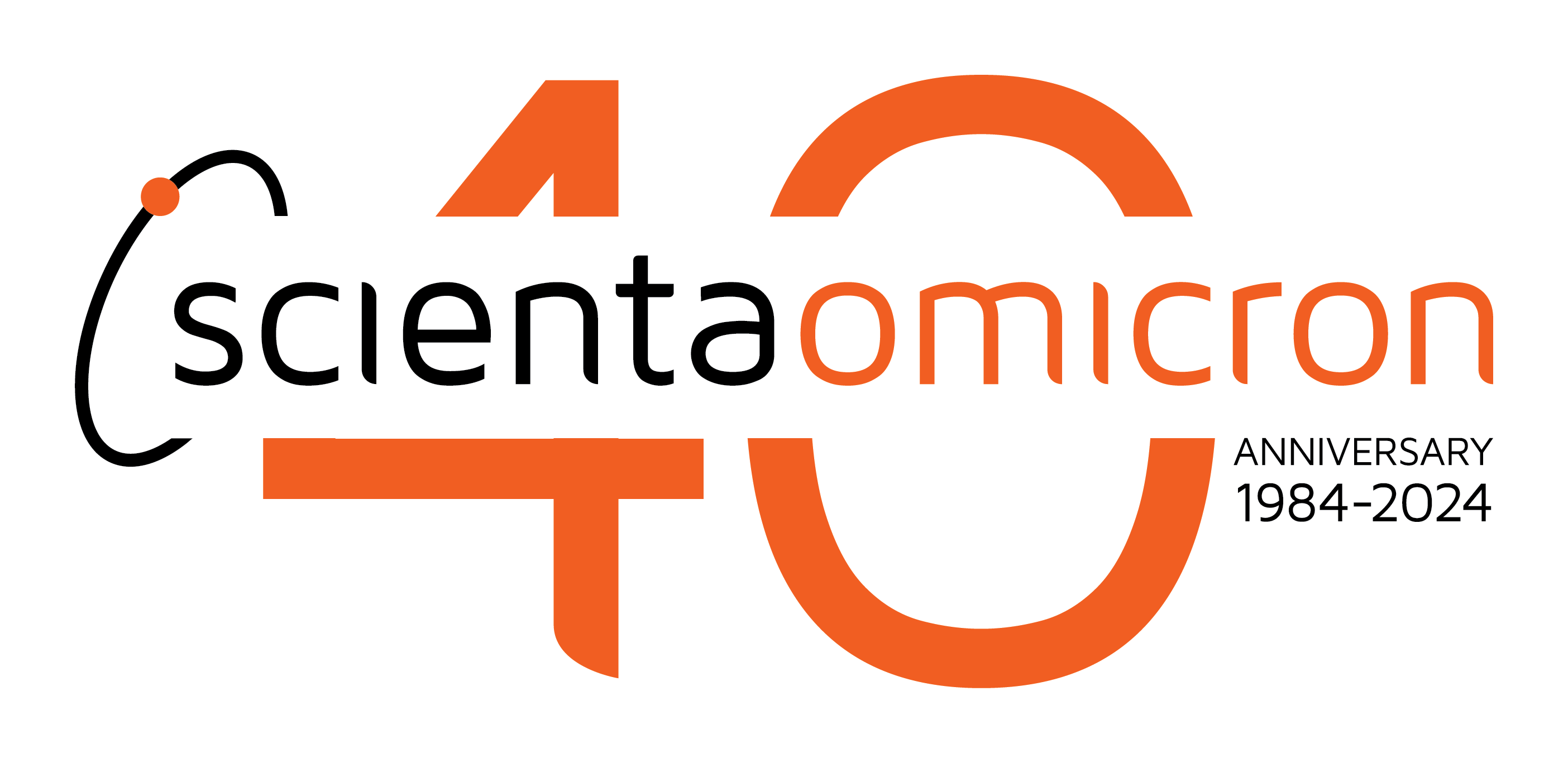

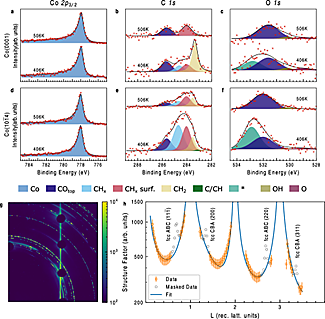
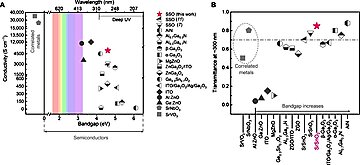
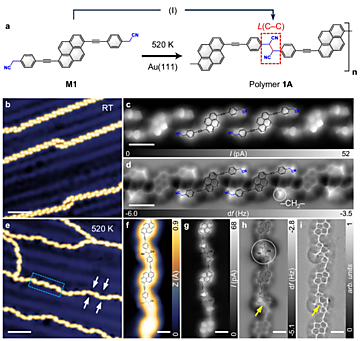
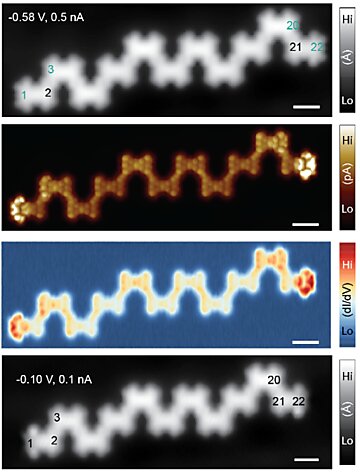
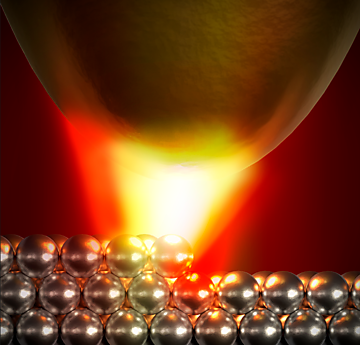
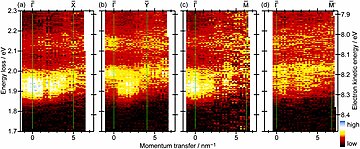
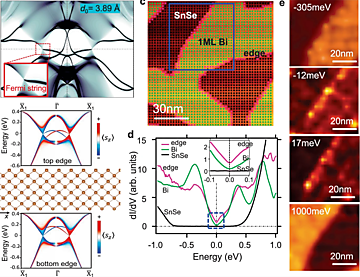
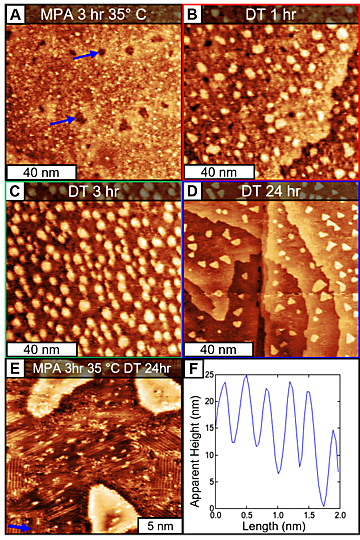
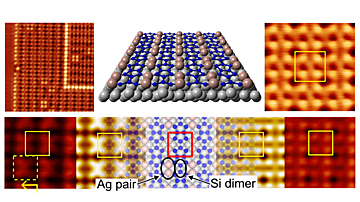
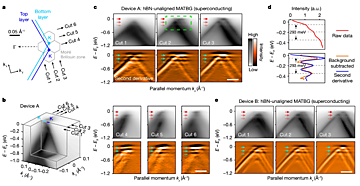
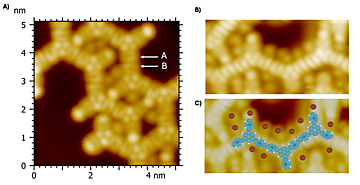
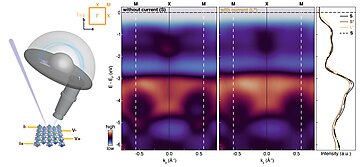
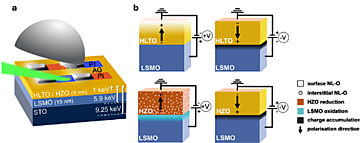
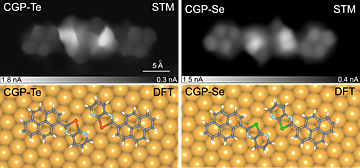
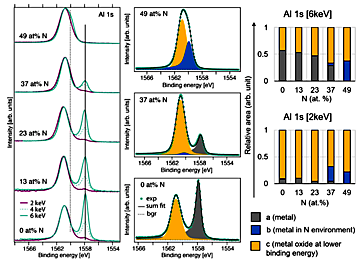

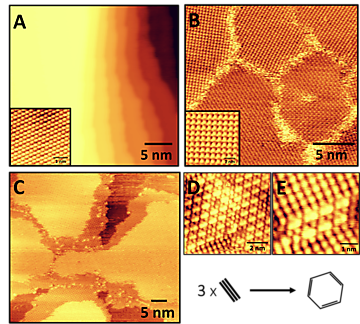


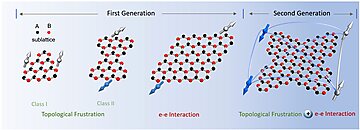
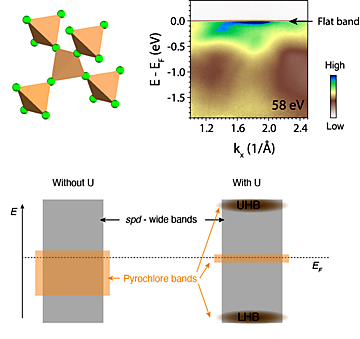

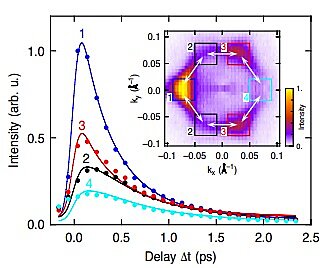
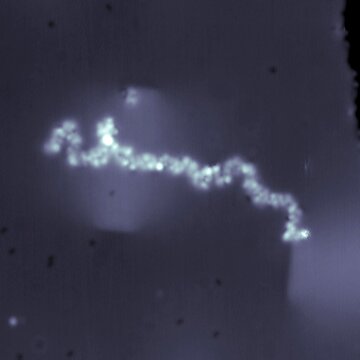
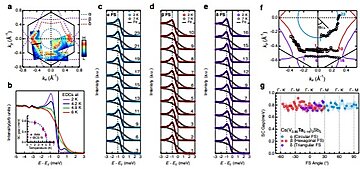
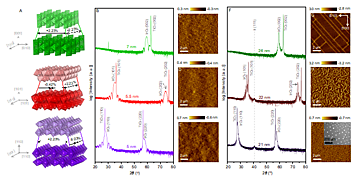
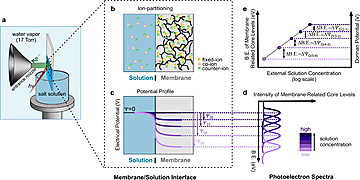
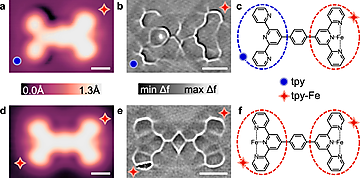

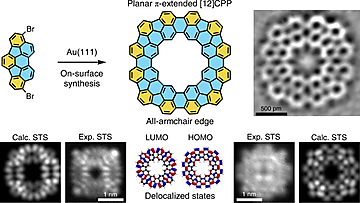

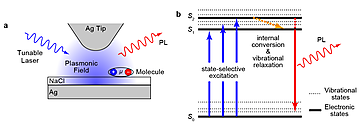
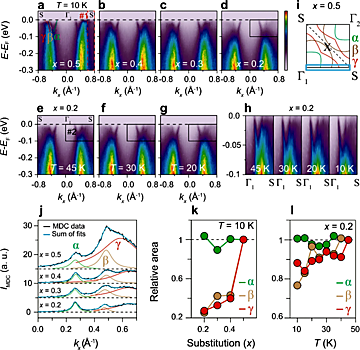
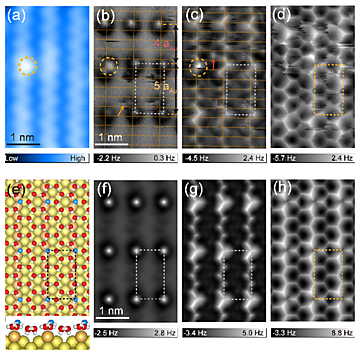
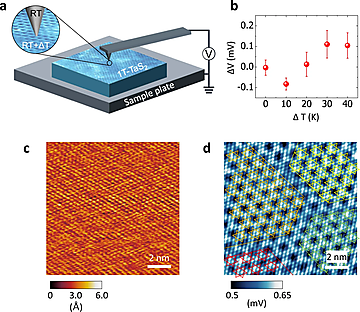
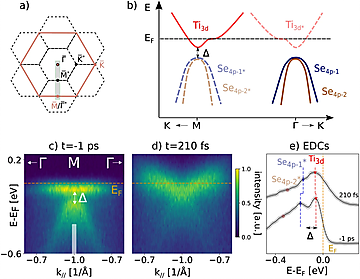
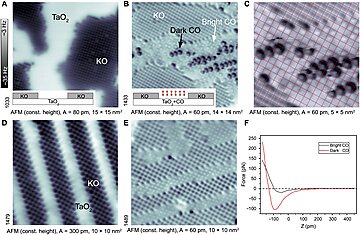
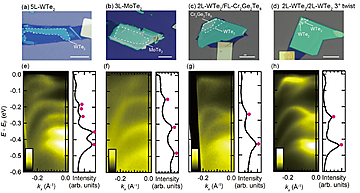
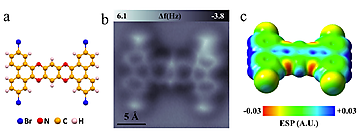
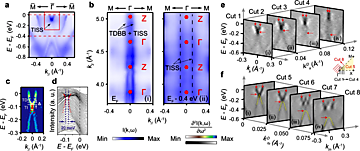
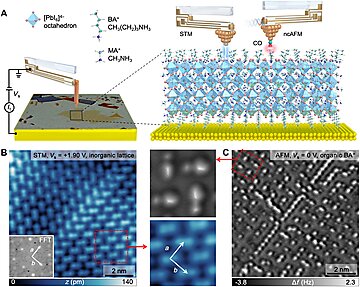
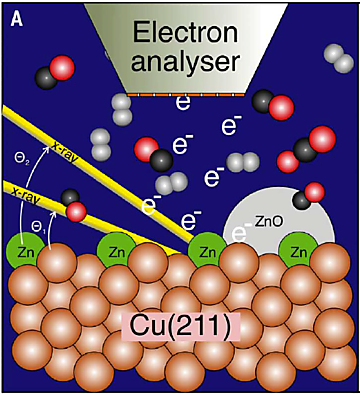



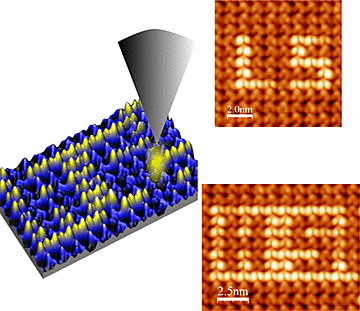
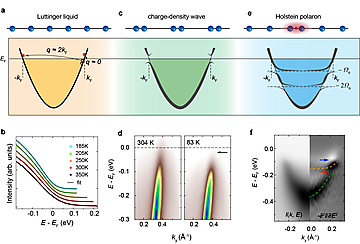
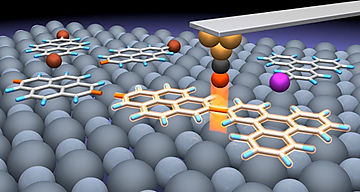
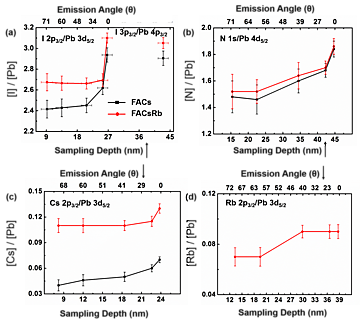
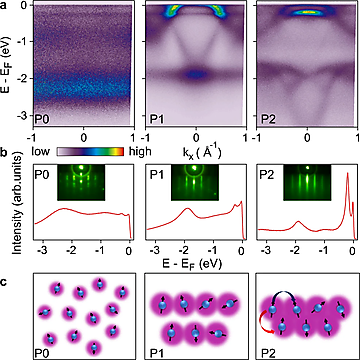

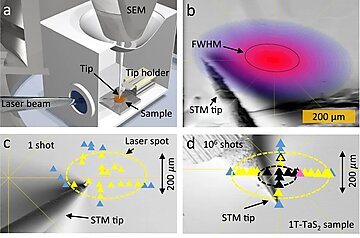
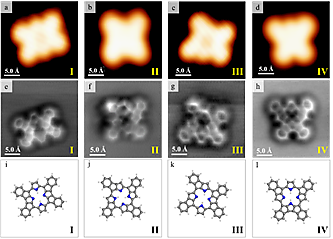
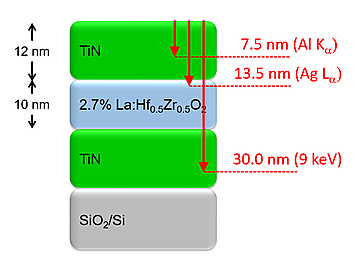
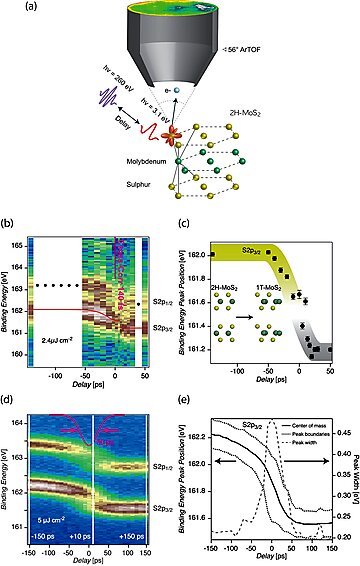
![© CC BY 4.0 All adatoms are characterized by a single and the same adsorption site, which is found to be the hollow site of the Nb(110) surface. The existence of a single adsorption site can be verified in two distinct way: (i) topographic imaging: as shown in the main text, Fig. 1 e, for each element, all adatoms have always the very same appearance on the surface; (ii) spectroscopic measurements: it is well-known that different adsorption sites result in very different hybridization strength, ultimately leading to distinct spectroscopic features. We analyzed several different adatoms for each element, and they all show the very same spectroscopic signatures, which is also found constant across different sample preparation (see Supplementary Note 4). The exact determination of the adsorption sites rely on atomically resolved images. Panel (a) show how adatoms are adsorbed, as expected, in the energetically favourable hollow site, which is the same adsorption site consistently used in our theoretical calculations (see Supplementary Note 9). However, depending on the tip used in the measurements and the set-point parameter, a corrugation reversal effect can be observed, as visualized in panel (b). This is in line with theoretical predictions suggesting strong corrugation reversal at (110) surfaces of bcc metals, with the effect expected to be particularly prominent especially for Nb [2]. | © CC BY 4.0](/Results/ROM/2021/202104/5224/image-thumb__5224__TextImage4/Adsorption%20Sites.jpg)
